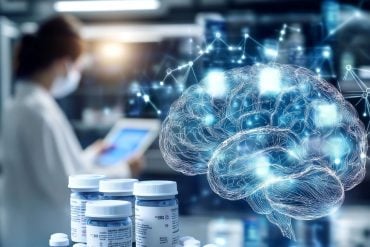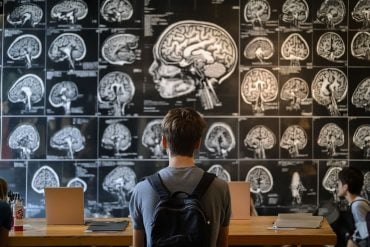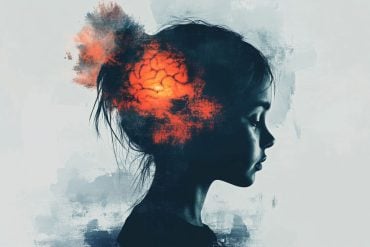Summary: Researchers explored potential treatments for neuropsychiatric disorders like schizophrenia and autism that act during critical windows of brain development.
They specifically targeted underperforming dopamine neurons, which connect to the frontal cortex and are vital for cognitive processing and decision-making. By stimulating these neurons in mice during adolescence, they’ve seen long-lasting changes that rescue the brain’s structural deficiencies that lead to enduring symptoms.
These findings suggest interventions during developmental windows could alter the course of these disorders.
Key Facts:
- The onset of neuropsychiatric disorders often correlates with dopamine system dysfunction, which becomes apparent during adolescence.
- Stimulating underperforming dopamine neurons in mice during adolescence led to long-lasting changes and rectified structural brain deficiencies.
- Targeting these critical windows of development could offer a way to change the progression of neuropsychiatric disorders like schizophrenia and autism.
Source: University of Rochester
The brain continuously changes during childhood and throughout adolescence. The onset of neuropsychiatric disorders like schizophrenia often begins during young adulthood.
Dysfunction of the dopamine system—necessary for cognitive processing and decision-making—begins during this point in development.
Researchers at the Del Monte Institute for Neuroscience at the University of Rochester are coming closer to finding a possible target for treating neuropsychiatric disorders like schizophrenia and autism during this time of development that could affect the brain circuitry into adulthood.
“Brain development is a lengthy process, and many neuronal systems have critical windows—key times when brain areas are malleable and undergoing final maturation steps,” said Rianne Stowell, PhD, a postdoctoral fellow in the Wang Lab at the University of Rochester Medical Center and co-first author on research out in the journal eLife.
“By identifying these windows, we can target interventions to these time periods and possibly change the course of a disease by rescuing the structural and behavioral deficits caused by these disorders.”
Researchers targeted underperforming neurons in the dopamine system that connect to the frontal cortex in mice. This circuitry is essential in higher cognitive processing and decision-making.
They found that stimulating the cells that provide dopamine to the frontal cortex strengthened this circuit and rescued structural deficiencies in the brain that cause long-term symptoms.
Previous research from the Wang Lab identified that this specific arm of the dopamine system was flexible in the adolescent brain but not in adults. This most recent research used this window for plasticity in the system as an opportunity for therapeutic intervention.
“These findings suggest that increasing the activity of the adolescent dopaminergic circuitry can rescue existing deficits in the circuit and that this effect can be long-lasting as these changes persist into adulthood,” Stowell said.
“If we can target the right windows in development and understand the signals at play, we can develop treatments that change the course of these brain disorders.”
This study is led by the senior author Kuan Hong Wang, PhD, of the University of Rochester Medical Center; co-first authors include Surjeet Mastwal and Xinjian Li from the National Institute of Mental Health; additional authors include Wenyu Zhang at the University of Rochester Medical Center, Matthew Manion at the National Institute of Mental Health, and Nam-Shik Kim, Ki-jun Yoon, Hongjun Song, and Guo-li Ming of the University of Pennsylvania.
Funding: This research was supported by the National Institutes of Health and the Del Monte Institute for Neuroscience pilot program.
About this mental health and neurodevelopment research news
Author: Kelsie Smith Hayduk
Source: University of Rochester
Contact: Kelsie Smith Hayduk – University of Rochester
Image: The image is credited to Neuroscience News
Original Research: Open access.
“Adolescent neurostimulation of dopamine circuit reverses genetic deficits in frontal cortex function” by Rianne Stowell et al. eLife
Abstract
Adolescent neurostimulation of dopamine circuit reverses genetic deficits in frontal cortex function
Dopamine system dysfunction is commonly implicated in adolescent-onset neuropsychiatric disorders.
Although psychosis symptoms can be alleviated by antipsychotics, cognitive symptoms remain unresponsive to such pharmacological treatments and novel research paradigms investigating the circuit substrates underlying cognitive deficits are critically needed.
The frontal cortex and its dopaminergic input from the midbrain are implicated in cognitive functions and undergo maturational changes during adolescence.
Here, we used mice carrying mutations in the Arc or DISC1 genes to model mesofrontal dopamine circuit deficiencies and test circuit-based neurostimulation strategies to restore cognitive functions.
We found that in a memory-guided spatial navigation task, frontal cortical neurons were activated coordinately at the decision-making point in wild-type but not Arc mutant mice.
Chemogenetic stimulation of midbrain dopamine neurons or optogenetic stimulation of frontal cortical dopamine axons in a limited adolescent period consistently reversed genetic defects in mesofrontal innervation, task-coordinated neuronal activity, and memory-guided decision-making at adulthood.
Furthermore, adolescent stimulation of dopamine neurons also reversed the mesofrontal circuit and cognitive deficits in DISC1 mutant mice.
Our findings reveal common mesofrontal circuit alterations underlying the cognitive deficits caused by two different genes and demonstrate the feasibility of adolescent neurostimulation to reverse these circuit and behavioral deficits.
These results may suggest developmental windows and circuit targets for treating cognitive deficits in neurodevelopmental disorders.







